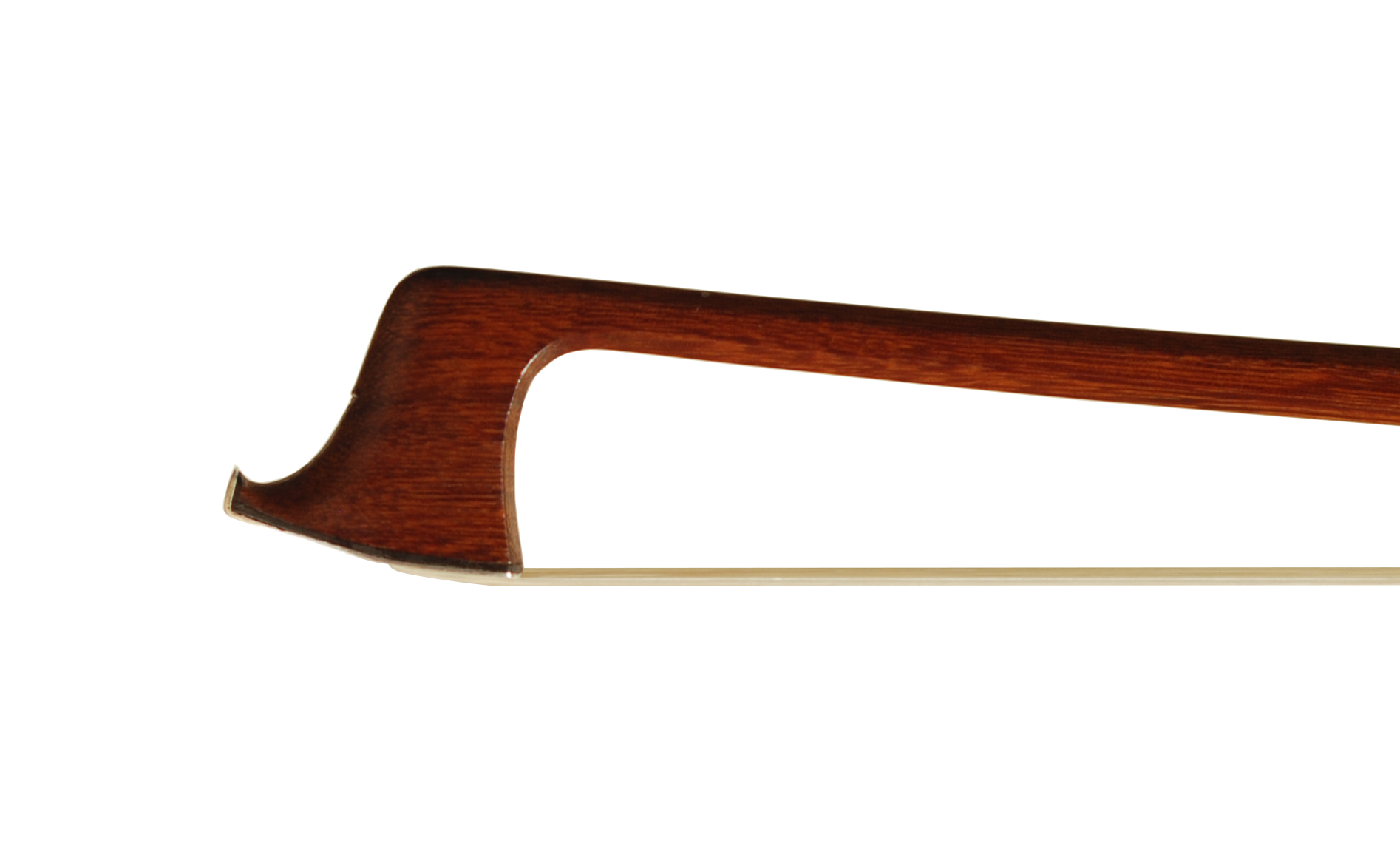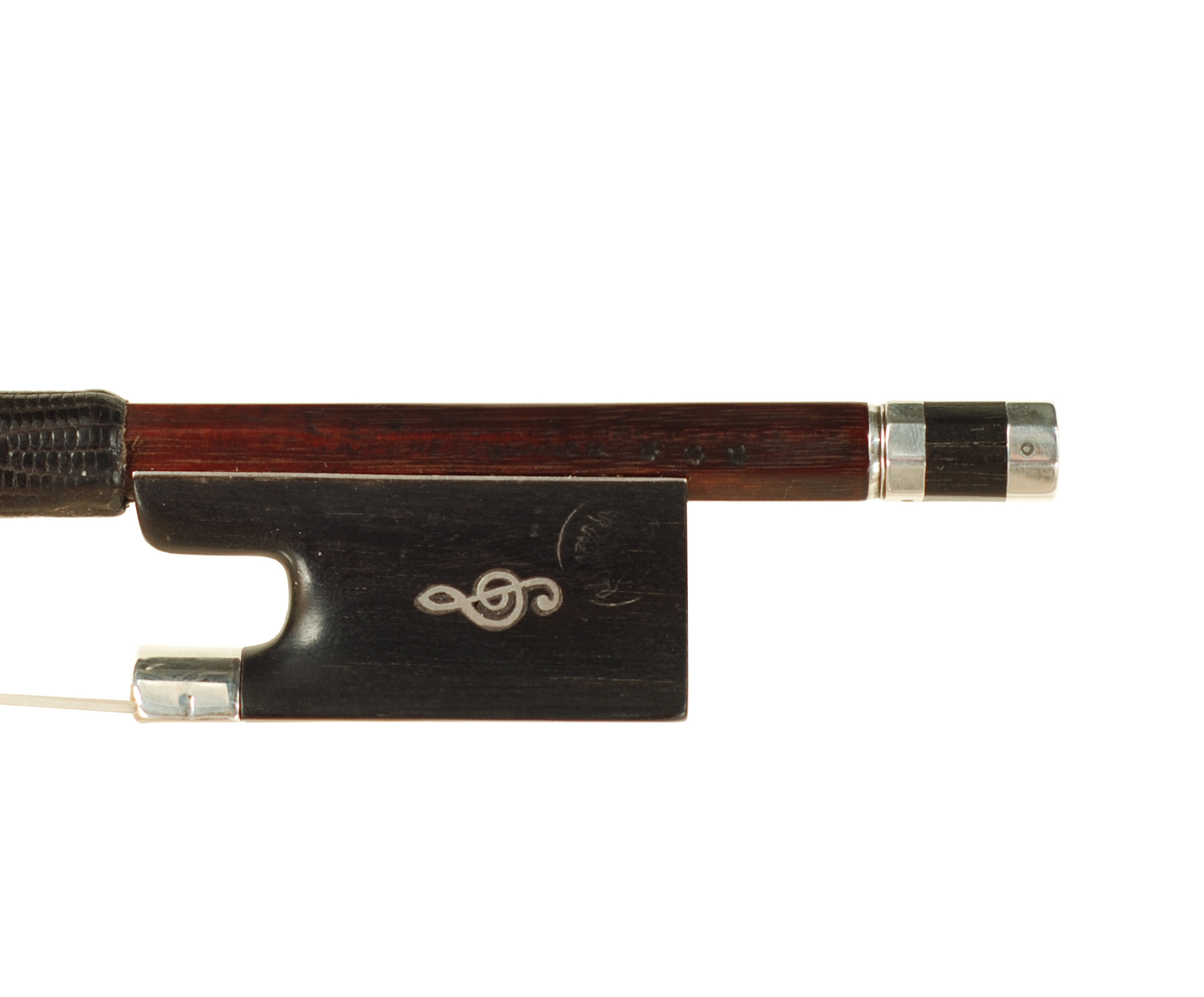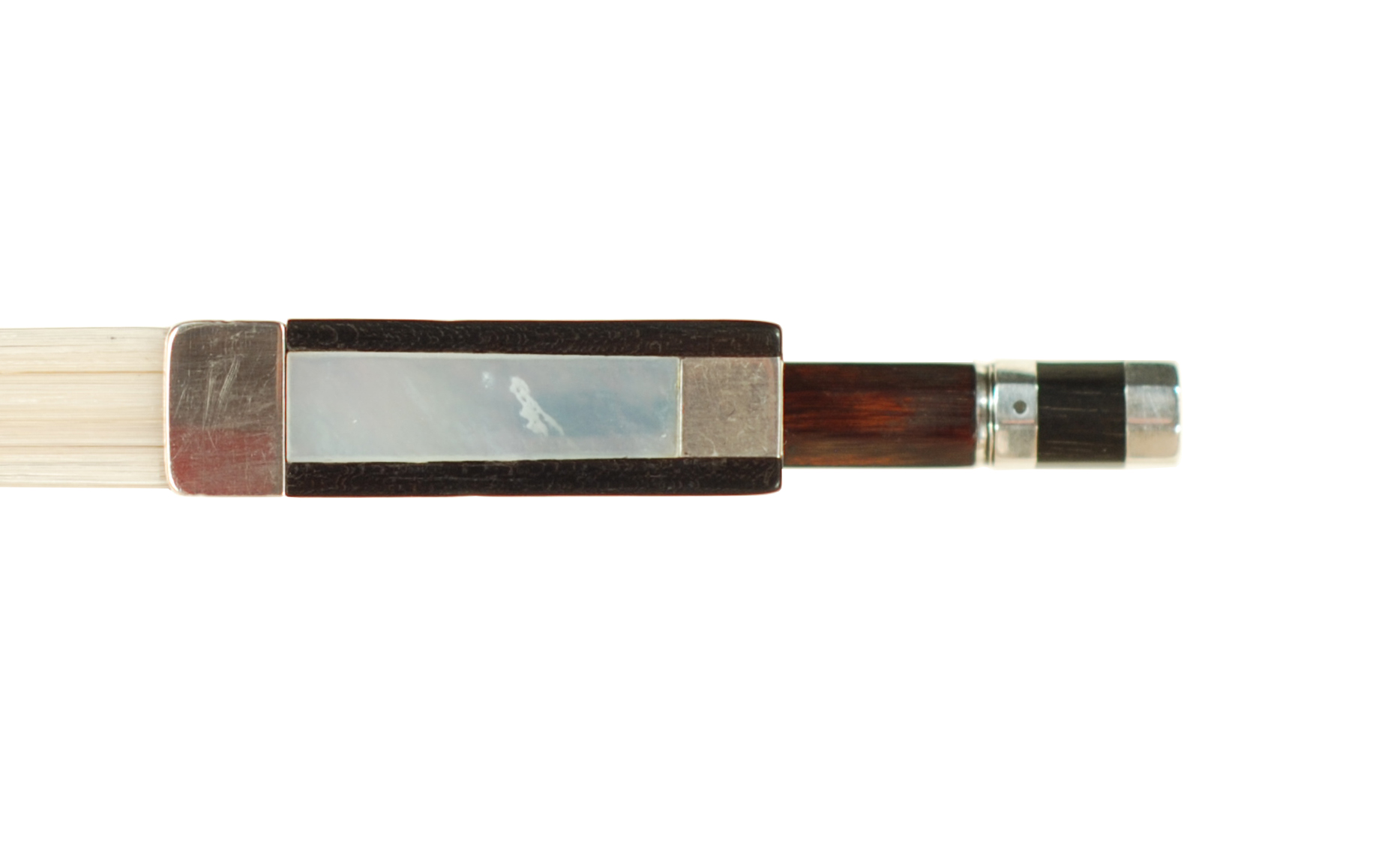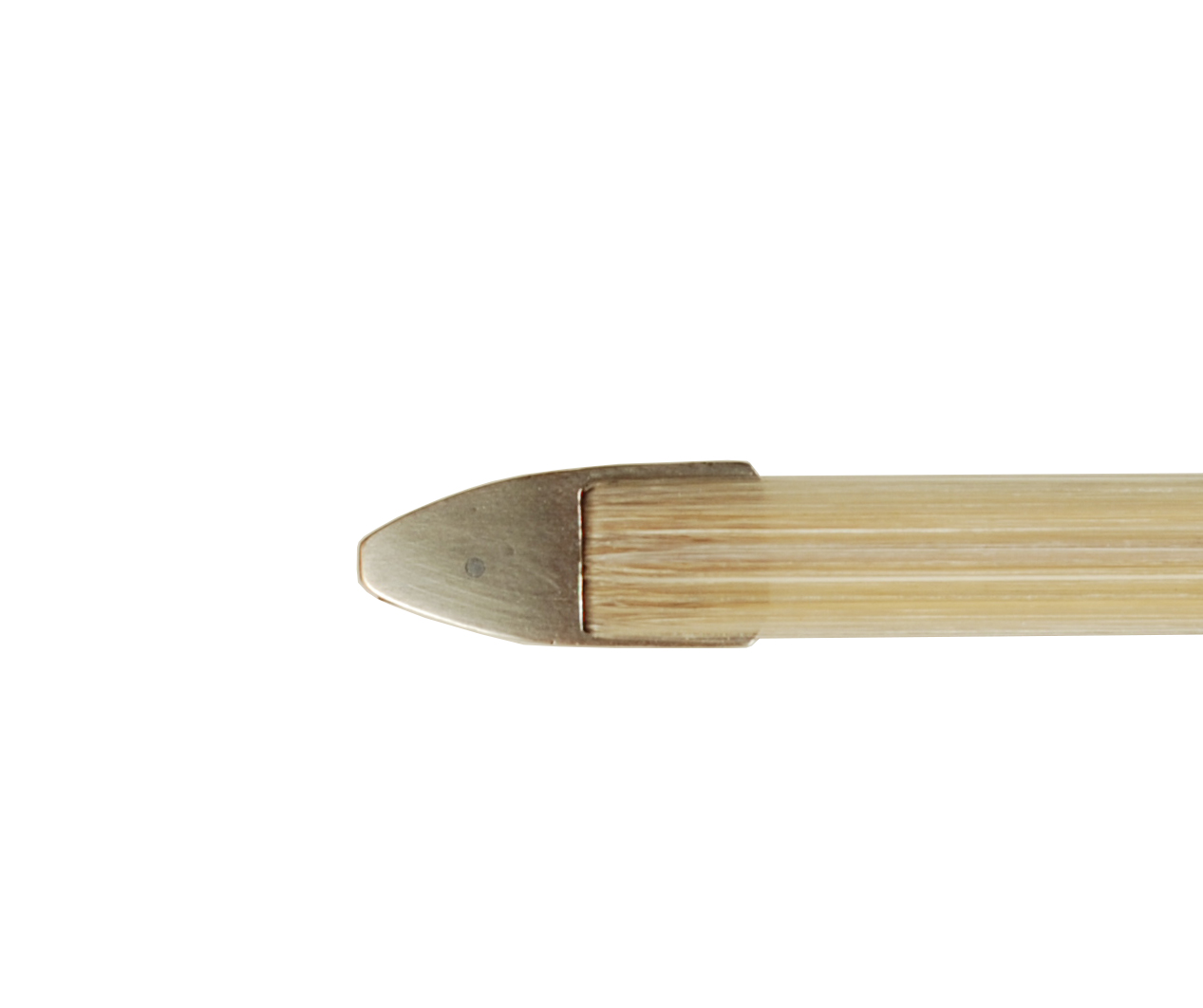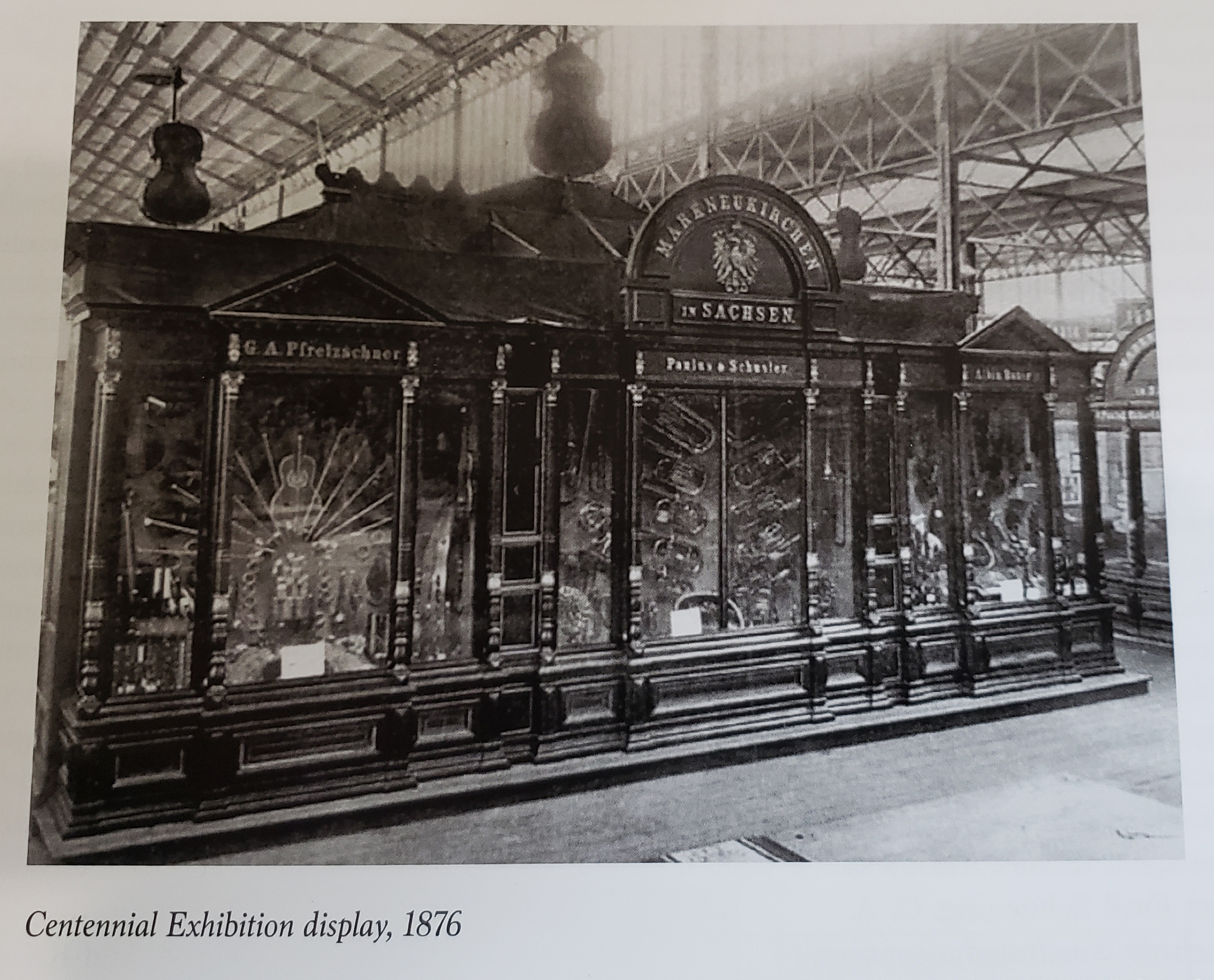G. A. Pfretzschner *** Sterling Violin Bow-Markneukirchen circa 1915-1925 – CURRENTLY OUT ON TRIAL –
$2,800.00

Stamped:
G Clef horizontally on frog in sterling
Winged dragon insignia
Pernambuco bows sound awesome and are in high demand here at our shop. Subtle differences in the wood are so important in a bow because they affect the playing qualities of a finished bow. Making a bow that will create the best sound on an instrument requires skill and craftsmanship at a very high level. Bow making is one of the few remaining artistic crafts that has not been replaced with machinery. Each piece of pernambuco has its own unique attributes, including strength, density, and tonal quality that the maker (artist) must take into account as they shape a bow. The wood must be able to bend in the presence of heat and then retain its shape when cool. Pernambuco‘s strength and flexibility result in excellent memory. Musicians are looking for a balance of stability, connection with the strings, and a responsiveness that allows the bow to feel like and extension of their arm. The bow must also articulate complex bowing passages with ease. Yes, the bow is so important. We have the arrival of another fantastic German bow.
The Pfretzschner family were legendary Saxon instrument and bow makers. The family dates to the mid 1600’s and brought many of the finest craftsmen of the region together to produce bows and stringed instruments for international distribution. They worked out of Markneukirchen and some of the more famous members of the family were Carl Friedrich, Johann Gottlob, Johann Carl, Elias, Carl Gustave Adolph, and Hermann Richard, the most famous bow making part of the family. The Pfretzschner family continued in the violin industry, especially in bow making, until the 1930’s. Carl Gustave Adolf Pfretzschner found the G.A. Pfretzschner Company in 1834. His firstborn, Gustav Adolf, continued the company with great skill. The business traded musical instruments and bows in Gothenburg, Paris, London, Tokyo, Zurich, Philadelphia, and New York. The G.A. Pfretzschner family was also known for leading the way in trading and sourcing horse hair by the ton and strings made from the intestinal casings of sheep for the string business throughout the world in the 19th and early 20th centuries. In 1876 they participated in the Centennial International Expedition in Philadelphia. This one event landed the G.A. Pfretzschner firm with 195 new customers purchasing 20,000 frets of strings, 8,000 violins, 16,800 bows, 6,500 accordions, 5,400 concertinas, 2000 guitars, 1500 flutes, and 100,000 harmonicas. Business boomed after the 1876 Exhibition. The G A Pfretzschner firm became one of the larger musical instrument businesses at the turn of the 19th century.
The skill of workmanship is evident in this bow that is octagonal in section and pernambuco specie. The red/brown color in the wood is characteristic of old stock pernambuco. The wood is choice and is firm, which is the strength of the bow. The camber starts about 1/3 of the way into the octagonal stick. The head of the stick has a facial in sterling silver. The ebony frog has silver G clefs inlaid into the ebony. The frog also features the encircled insignia. The heel is one-piece sterling, and the bow is finished with a three-piece silver and ebony adjuster. I have given the bow a very good cleaning and replaced the leathers while giving the stick fresh hair. This bow is fantastic, a gorgeous stick in very good condition with everything original. Wow!
Weight fully haired 63.9 grams
